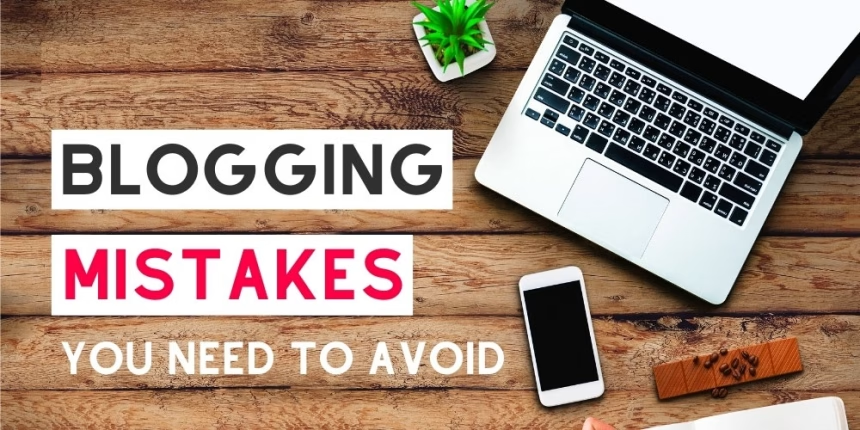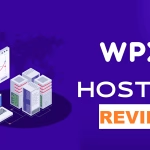Starting a blog is exciting — the possibilities feel endless! But understanding the common blogging mistakes to avoid from the start can make all the difference. In the beginning, I was so focused on creating content that I overlooked key strategies — like proper SEO, consistent posting, and engaging with my audience. It happens to the best of us.
The good news? Recognizing these mistakes early can save you time, stress, and missed opportunities. And that’s exactly why we’re here — to help you steer clear of these pitfalls and build a thriving blog.
Plus, I’ll share some powerful tools we use to make smart blogging decisions so you’re not just guessing your way through.
Ready? Let’s dive into the 10 common blogging mistakes to avoid in 2025 and beyond — and how to fix them.
1. Neglecting SEO
Let’s be real — SEO can feel like a confusing maze, especially when you’re just starting. I used to think SEO was all about stuffing as many keywords as possible into my blog posts.
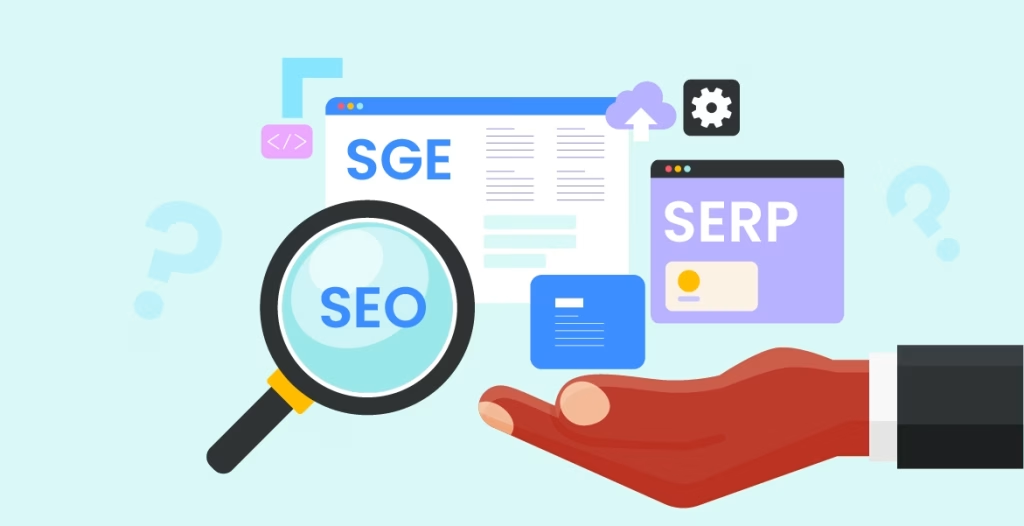
Spoiler alert: That didn’t work.
Proper SEO goes way beyond keywords. It’s about creating high-quality, user-focused content while strategically helping search engines understand what your blog is about.
Here’s what you need to focus on:
Keyword Research: Use tools like Surfer SEO, SEMrush, and Moz to find the right keywords — not just the ones with high search volume but those with manageable competition. Long-tail keywords (like “how to start a blog for free”) often work wonders.
Content Structure: Break your content into clear headings (H1, H2, H3) so both readers and search engines can easily navigate your post. Aim for scannable, bite-sized paragraphs.
On-Page Optimization: Add your primary keyword naturally in the title, meta description, first 100 words, and alt text for images.
Internal and External Links: Link to your related blog posts (internal links) and reputable sources (external links) to build context and credibility. Also, find broken links and fix them.
Backlinks: Earning backlinks — when other sites link to your content — boosts your authority. Reach out to fellow bloggers, guest post, or create link-worthy content like in-depth guides or original research.
Pro Tip: Don’t obsess over keywords. Write for your audience first, and sprinkle in SEO strategically. Google loves content that solves problems and keeps readers engaged.
By mastering SEO step by step, you’ll turn your blog into a traffic magnet. Trust me — it’s a game-changer.
2. Inconsistent Posting
When I first started blogging, I would post sporadically — sometimes twice a week, other times once a month.
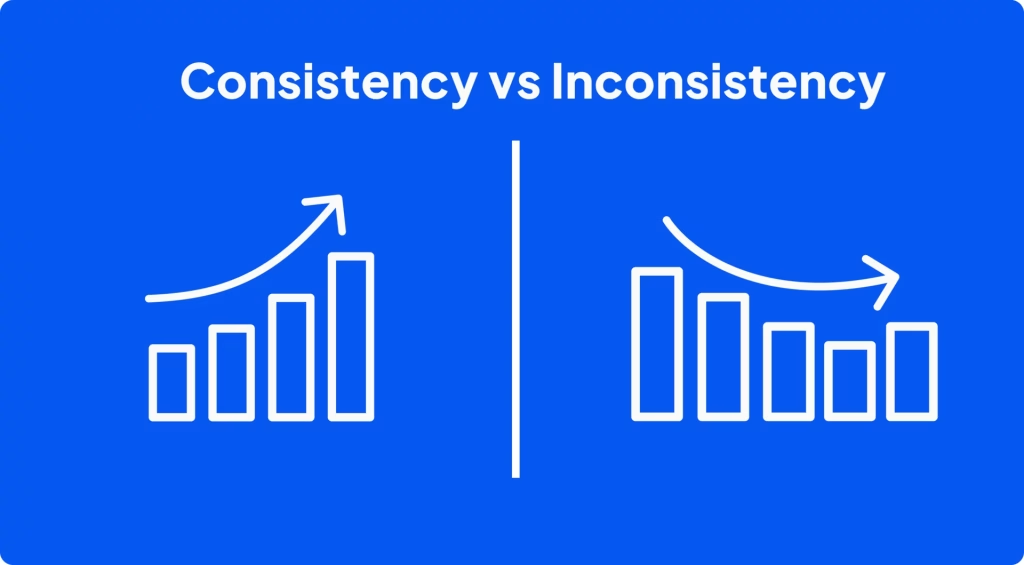
Unsurprisingly, this made it hard to build momentum and retain readers. Imagine subscribing to a YouTube channel that posts three videos one week and then goes silent for a month — you’d probably lose interest, right?
The same applies to blogs. Inconsistent posting is one of the most common blogging mistakes to avoid because it can cause readers to disengage and search engines to overlook your site.
Why consistency matters:
- Builds trust: Readers start to rely on your content, knowing when to expect new posts.
- Boosts SEO: Search engines favor websites that publish fresh content regularly.
- Maintains engagement: A steady stream of content keeps your audience hooked.
Pro tip: Start with a realistic schedule. It’s better to post once a week consistently than to burn out trying to post daily. Use a content calendar to plan your topics and set deadlines.
Example: If you’re a solo blogger juggling other responsibilities, aim for one quality post every Thursday. As you build a rhythm, you can gradually scale up.
Consistency doesn’t mean sacrificing quality for quantity. Find your sweet spot — a balance between how often you can post and how valuable each post is. Avoid the blogging mistake of overcommitting to an unsustainable schedule — slow and steady wins the race.
Bottom line: Whether it’s once a week or twice a month, stick to a schedule that works for you and your readers. It’s all about showing up — again and again.
3. Boring, Generic Content
Let’s be honest — no one wants to read the same old regurgitated advice. I used to play it safe with basic “how-to” posts, thinking that’s what people wanted.

But my blog took off when I started getting more personal, vulnerable, and opinionated.
Why generic content hurts your blog:
- Lacks personality: Readers connect with people, not just information. Bland content feels lifeless.
- Fails to stand out: If your post sounds like a copy-paste version of a hundred others, why would anyone bookmark it?
- Hurts SEO: Search engines prioritize unique, high-value content. Repetitive ideas won’t rank.
Pro tip: Don’t be afraid to inject your personality, tell stories, and share bold opinions. Readers love authenticity — it makes your content relatable and memorable.
Example: Instead of writing “10 Tips for Better Time Management,” why not try “The Brutal Time Management Lessons I Learned After Missing 5 Deadlines”? It’s specific, human, and instantly more engaging.
How to fix it:
- Find your angle: Ask yourself — what’s your take on this topic? How does your experience shape the advice you give?
- Use real-life examples: Personal stories or client case studies add credibility.
- Ask bold questions: Challenge conventional wisdom. Spark curiosity.
Bottom line: One of the biggest blogging mistakes to avoid is blending in. Dare to be different. Your unique voice is your superpower — use it!
4. Lack of Promotion
In the early days, I would spend hours crafting the perfect blog post, then just hit “publish” and hope for the best.
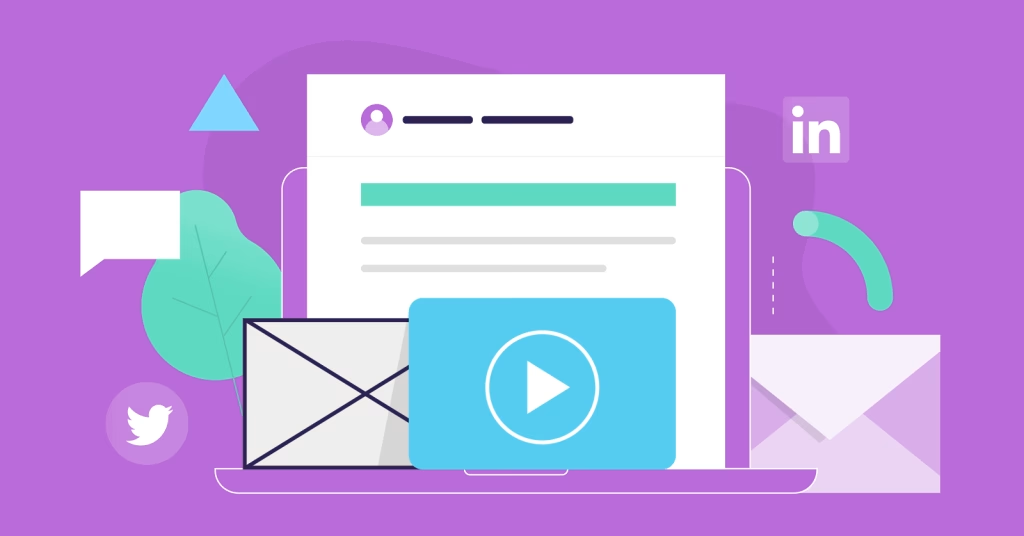
Spoiler alert: That doesn’t work.
Writing great content is only half the battle — the other half is making sure people see it. A lack of promotion is one of the most common blogging mistakes to avoid because even the most brilliant post won’t gain traction if it’s sitting in a vacuum.
Why promotion matters:
- Boosts visibility: Your audience won’t magically find your content — you need to put it in front of them.
- Drives traffic: Strategic promotion means more eyeballs on your blog.
- Strengthens authority: Sharing your posts across platforms establishes you as an expert in your niche.
Pro tip: Follow the 80/20 rule — spend 20% of your time creating content and 80% promoting it. Sounds bold, but it works.
How to effectively promote your blog:
- Social media: Share your post multiple times across platforms like Twitter, LinkedIn, Pinterest, and Facebook. Tailor captions to each audience.
- Email marketing: Build a list and notify your subscribers whenever you publish something new.
- Repurpose content: Turn your blog post into bite-sized social graphics, videos, or infographics.
- Collaborate: Partner with other bloggers or influencers to cross-promote each other’s work.
- SEO: Optimize for search engines so your content works for you long after you hit publish.
Example: Instead of tweeting once about your new post, break it down into a thread — share key takeaways, a compelling quote, and a CTA (call to action) to read the full post.
Bottom line: Creating content without promotion is like throwing a party and forgetting to send invitations. Spread the word — your blog deserves to be seen!
5. Not Building an Email List
I know, I know — everyone talks about the importance of email lists. But honestly, I didn’t take it seriously until years into my blogging journey.
Big mistake.

Building an engaged email subscriber base is one of the smartest moves you can make as a blogger. It’s not just about collecting emails — it’s about creating a direct line to your audience, bypassing unpredictable social media algorithms.
Why building an email list matters:
- Ownership: You own your list — unlike social media platforms that can change overnight.
- Engagement: Email subscribers are more likely to engage with your content, offers, and updates.
- Monetization: An email list opens doors to product launches, affiliate marketing, and exclusive content.
Pro tip: Start building your list from day one. It’s never too early — or too late — to begin.
Tools I recommend:
- Beehiiv: Perfect for content creators looking to grow and monetize their newsletters.
- ActiveCampaign: This is Great for small businesses that need powerful automation and CRM features.
- Mailchimp: A beginner-friendly option for those just starting their email marketing journey.
How to grow your email list:
- Create a lead magnet: Offer a freebie (like an eBook, checklist, or exclusive tips) in exchange for email sign-ups.
- Add sign-up forms everywhere: Include forms on your homepage, blog posts, and even your About page.
- Use pop-ups strategically: Exit-intent pop-ups can capture visitors who are about to leave.
- Promote your list: Mention your newsletter in blog posts, on social media, and within your email signature.
Example: If you run a fitness blog, offer a “7-Day Meal Plan for Busy People” as a free download — it’s simple, relevant, and valuable.
Bottom line: Not building an email list is one of the most costly blogging mistakes to avoid. Your email list is your secret weapon — nurture it, and it will fuel your blog’s growth and income.
6. Ignoring Community Engagement
When I first started, I treated my blog like a one-way street — I’d publish content and move on to the next post.
Big mistake.
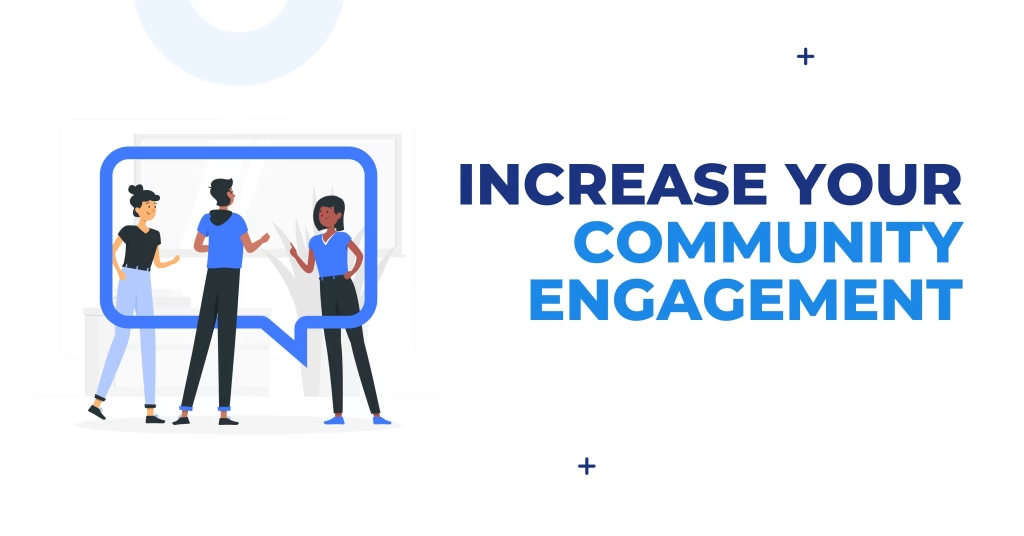
The most successful bloggers know that building relationships with readers is crucial. Your blog isn’t just a platform for sharing ideas — it’s a community. Ignoring engagement is one of the most overlooked blogging mistakes, and it can cost you loyal followers.
Why community engagement matters:
- Builds trust: When you interact with readers, they feel heard and valued.
- Boosts loyalty: A connected community is more likely to return, share your content, and support your work.
- Enhanced reach: Comments, shares, and discussions signal to search engines that your content is active and relevant.
Pro tip: Treat every comment like the start of a conversation. Ask follow-up questions, share additional insights, and show genuine appreciation.
How to engage with your community:
- Respond to comments: Don’t just say “thanks” — add thoughtful replies, ask for their opinions, and keep the dialogue going.
- Ask questions in your posts: End blog posts with open-ended questions to encourage feedback.
- Create polls or surveys: Get readers involved by asking for their input on future content.
- Highlight your readers: Mention insightful comments in follow-up posts or shout out loyal readers on social media.
- Host live sessions: Consider live Q&A sessions on platforms like Instagram or YouTube to connect directly with your audience.
Example: If you run a travel blog, end a post about solo travel with, “Have you ever taken a solo trip? What was the most surprising part of your journey?” — inviting readers to share their experiences.
Bottom line: A blog isn’t a monologue — it’s a dialogue. Ignoring community engagement stifles growth. Nurture your audience, and they’ll not only stick around but also become your biggest advocates.
7. Failing to Repurpose Content
In the beginning, I would slave over each new blog post, thinking I had to start from scratch every time. What a waste of time!
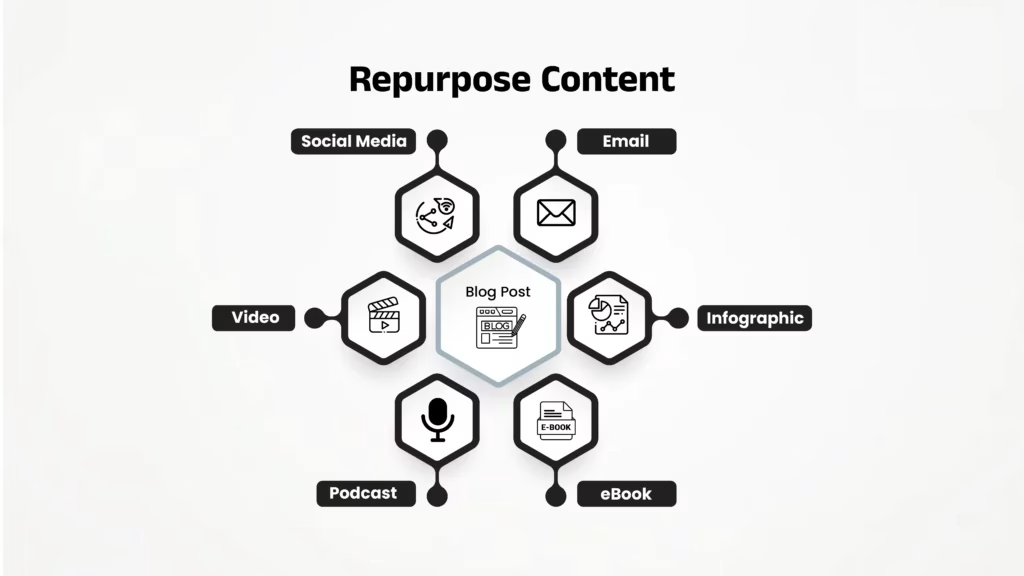
Repurposing content isn’t just a time-saver — it’s a growth strategy. Taking one well-crafted blog post and transforming it into multiple formats helps you work smarter, not harder. Plus, it amplifies your reach across platforms.
Why repurposing content matters:
- Maximizes reach: Different people consume content in different ways — some prefer reading, others love videos or podcasts.
- Boosts SEO: Repackaging your content with optimized keywords for each platform strengthens your digital footprint.
- Saves time and effort: Instead of reinventing the wheel, build momentum with content you’ve already created.
Pro tip: Focus on your evergreen content — posts that stay relevant over time — as they make the best foundation for repurposing.
How to repurpose your content:
- Turn blog posts into social media snippets: Pull quotes, tips, or stats from your posts to create engaging LinkedIn updates, Instagram carousels, or tweets.
- Create short videos: Summarize key points from your blog into bite-sized videos for TikTok, YouTube Shorts, or Instagram Reels.
- Record a podcast episode: Expand on your post’s topic in an audio format for listeners on the go.
- Design infographics: Use tools like Canva to visually present data or step-by-step guides.
- Build email newsletters: Repurpose blog content into value-packed emails for your subscriber list.
Example: Let’s say you wrote a blog post titled “10 Productivity Hacks for Bloggers.” You could:
- Create a Twitter thread summarizing all 10 tips.
- Film a 60-second Instagram Reel highlighting the top 3 hacks.
- Craft an infographic showing the full list.
- Expand one hack into a podcast episode.
- Send a weekly email focusing on one tip at a time.
Bottom line: Failing to repurpose content is one of the most common blogging mistakes to avoid. Your content has more life than you realize — squeeze every drop of value from it and watch your audience (and blog) grow.
8. Lack of a Cohesive Brand
If I’m being honest, my blog went through an identity crisis in the early days. One week, I was writing about productivity hacks, the next about travel tips — all with different fonts, colors, and writing styles. No surprise, my readers were confused.
Big mistake.

A cohesive brand is more than just a pretty logo — it’s the personality, voice, and visual identity that makes your blog instantly recognizable. Without it, you risk blending into the background of the internet.
Why having a cohesive brand matters:
- Builds trust: Consistency signals reliability — readers know what to expect.
- Boosts recognition: A strong brand makes you memorable in a crowded niche.
- Strengthens your message: Unified visuals and voice reinforce your blog’s core message and values.
Pro tip: Your brand isn’t just about how your blog looks — it’s about how it feels. Think about the emotions you want to evoke in your audience.
How to build a cohesive brand for your blog:
- Define your niche and message: What do you stand for? Who are you helping? What problems are you solving?
- Craft your brand voice: Are you friendly and casual or professional and authoritative? Stick to a tone that reflects your personality and appeals to your audience.
- Create a visual identity: Choose a consistent color palette, typography, and logo. Tools like Canva and Coolors can help.
- Design branded graphics: Ensure your featured images, social media posts, and email templates have a uniform look.
- Stay consistent across platforms: Your blog, Instagram, LinkedIn — they should all feel like they belong to the same brand.
Example: If you run a wellness blog focused on mindfulness, your brand voice might be calm and encouraging, with soft colors like sage green and lavender and a tagline like, “Find balance in every day.” Every post and social update would reflect this serene vibe.
Bottom line: A lack of cohesive branding is one of the most subtle yet damaging blogging mistakes to avoid. Your brand is your blog’s fingerprint — unique and instantly recognizable. Nurture it, and watch your audience grow.
9. No Monetization Strategy
When I first started blogging, I naively thought the money would just start rolling in.
Spoiler alert: That’s not how it works.
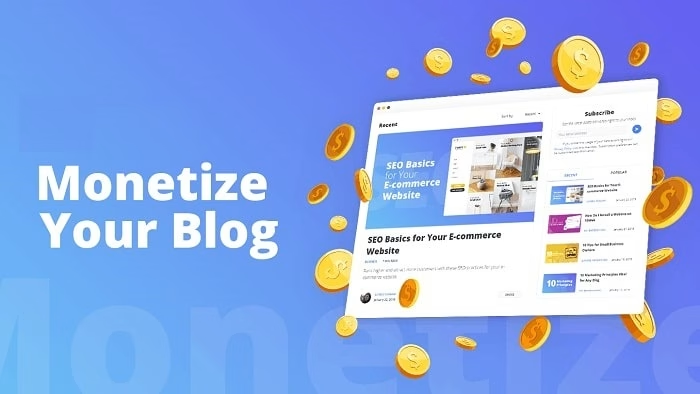
Hoping your blog will magically make money without a plan is like opening a store but forgetting to stock the shelves or put up a cash register. Successful bloggers treat their blogs like businesses — with clear revenue streams and strategic plans.
Why having a monetization strategy matters:
- Predictable income: A clear plan helps turn your blog from a hobby into a reliable income source.
- Content with purpose: Knowing how you’ll make money lets you create content that aligns with your financial goals.
- Diverse revenue streams: Different strategies protect you from relying too heavily on one source.
Pro tip: Don’t wait until you have thousands of readers to think about monetization. Start laying the groundwork early.
Effective blog monetization strategies:
- Affiliate marketing: Promote products or services and earn a commission for each sale through your referral link. (Example: Recommending tools like Beehiiv or ActiveCampaign.)
- Sponsored content: Partner with brands to create paid blog posts or reviews.
- Digital products: Sell eBooks, courses, printables, or templates. (Hint: If you’re in the content creation niche, something like an “AI Growth Engine” bundle can be a great offer.)
- Ad revenue: Use ad networks like Google AdSense or Mediavine to earn from page views.
- Memberships or subscriptions: Offer premium content, community access, or exclusive resources for a monthly fee.
- Services: Monetize your expertise by offering coaching, consulting, or freelance services.
Example: Let’s say you run a travel blog. Your monetization plan might look like this:
- Affiliate marketing: Recommend travel gear through Amazon Associates.
- Digital product: Sell an “AI Content Creation Engine” BUNDLE.
- Sponsored posts: Partner with hotels or tourism boards.
- Ad revenue: Use Mediavine for display ads.
Bottom line: Not having a monetization strategy is one of the most critical blogging mistakes to avoid. Treat your blog like a business — plan your income streams early, test what works, and scale what sticks.
10. Giving Up Too Soon
Let’s face it — building a successful blog doesn’t happen overnight. I can’t tell you how many times I nearly threw in the towel when my growth felt slow or stagnant.

But here’s the truth: The bloggers who succeed aren’t always the most talented — they’re the most persistent.
Blogging is a long game. The viral hits and overnight successes you see? They often come after months (or years) of consistent effort behind the scenes. If you give up too soon, you’ll never get to see the results of all your hard work.
Why persistence matters:
- SEO takes time: It can take months for your content to rank on search engines, but the payoff is long-term organic traffic.
- Audience trust builds slowly: Readers need time to get to know, like, and trust you before they become loyal followers.
- Skills compound: Each post you write sharpens your writing, SEO, and marketing skills.
Pro tip: Set realistic goals and track your progress. Focus on growth metrics like traffic, email subscribers, and engagement rates — not just revenue at the start.
How to stay motivated when growth feels slow:
- Celebrate small wins: Did you get your first 100 page views? A new email subscriber? These are stepping stones worth celebrating.
- Engage with your community: Build relationships with fellow bloggers or your readers — their support can keep you going.
- Review your strategy regularly: If something isn’t working after a few months, pivot. Experiment with new content formats or SEO tactics.
- Create a vision board: Remind yourself why you started blogging in the first place.
Example: Imagine you’re running a personal finance blog. The first few months might feel like you’re writing into the void. But as you optimize for SEO and share valuable tips, you slowly attract readers searching for budgeting advice. By month six, you land your first affiliate commission — a small win that reignites your motivation.
Bottom line: Giving up too soon is one of the most heartbreaking blogging mistakes to avoid. Success rarely happens overnight. Stay consistent, learn from your missteps, and trust that every small effort compounds over time.
Final Thoughts
The good news? These are all common blogging mistakes to avoid — and the best part is, they’re fixable.
Start by tackling the biggest gaps in your current blogging strategy. Is it inconsistent posting? Lack of an email list? Weak promotion efforts? Prioritize one area at a time so you don’t feel overwhelmed. Progress, not perfection, is the goal.
Experiment, learn, and adapt. Blogging isn’t about getting everything right from day one — it’s about staying curious and embracing the process. Every so-called “mistake” is just a stepping stone to growth. The bloggers who succeed are the ones who treat setbacks as lessons, not roadblocks.
Need help identifying your next steps? Drop a comment below, and let’s chat — I’d love to brainstorm ideas with you.
Oh, and don’t keep these insights to yourself — share this article with your audience or blogging friends. Let’s grow together, learn from each other’s experiences, and build blogs that truly thrive.
We’re in this together!
FAQs
1. Why should bloggers avoid over-optimizing their content?
Over-optimizing blog content can make it sound unnatural and robotic, pushing readers away. While SEO is essential, your priority should be crafting valuable, reader-friendly content. Keywords should blend seamlessly into engaging, informative writing.
2. How can I ensure I’m publishing high-quality blog posts?
To maintain high-quality content, focus on providing value through solid research, clear writing, and actionable insights. Before publishing, ask yourself: “Does this blog post genuinely help my audience?” If not, revise until it does.
3. Is blog design really that important?
Yes! Your blog’s design affects user experience and credibility. It’s among the most overlooked blogging mistakes to avoid. A clean, easy-to-navigate, and mobile-friendly design keeps visitors on your site longer. Good design makes content more accessible and encourages repeat visits.
4. How crucial is promoting my blog on social media?
Promoting your blog on social media is essential for driving traffic and expanding your audience. However, don’t just share links—engage with followers, start conversations, and build relationships. Social media works best when it’s a two-way street.
5. Why is choosing a niche important for blogging success?
Blogging without a clear niche can confuse your audience and dilute your authority. A focused niche helps you attract loyal readers, establish expertise, and tailor content to specific interests, making your blog more impactful.
6. How often should I post new blog content?
Consistency matters more than frequency. While regular posting is important, quality should always come first. For most bloggers, a schedule of once a week or bi-weekly works best. The key is to set a realistic posting rhythm and stick to it.
7. Is it a mistake to ignore building an email list?
Absolutely! An email list gives you direct access to your audience without relying on social media algorithms. It’s a powerful tool for building lasting relationships, promoting new content, and boosting blog revenue.
8. How can I make my blog content stand out?
To avoid generic content, develop a unique voice and share personal insights. Readers connect with authenticity, so offer fresh perspectives, real-life examples, and relatable stories to set your blog apart.
9. What if I struggle to blog consistently?
If time is tight, focus on creating evergreen content—posts that stay relevant long-term. Batch-writing and scheduling posts in advance can also help maintain consistency, even during busy periods.
10. Why should bloggers track their blog’s performance?
Tracking analytics is vital for growth. Monitoring traffic, reader behavior, and content performance helps you refine your strategy, discover what works, and identify areas for improvement.
11. Should I follow blogging trends to grow my audience?
Trends can be helpful, but don’t chase them blindly. Ensure any trend aligns with your blog’s goals and audience interests. Prioritize content that resonates with your niche while staying open to fresh ideas.
12. How important is reader engagement for a blog’s success?
Engaging with readers builds trust and community. Respond to comments, ask for feedback, and encourage discussions. Active engagement strengthens relationships and boosts loyalty, helping your blog thrive.
13. How can I overcome writer’s block as a blogger?
Beat writer’s block by keeping an idea bank, breaking posts into smaller sections, or switching your writing environment. Taking short breaks can also spark creativity and prevent burnout.
14. Does blog post length matter?
There’s no perfect length—it depends on the topic and audience. Focus on depth and value rather than word count. A post should be long enough to cover the subject thoroughly without unnecessary fluff.
15. How can I tell if my blog post is ready to publish?
Your post is ready when it’s clear, well-researched, and free of errors. Double-check spelling, grammar, and links. Ensure it meets your audience’s needs and includes relevant keywords without overstuffing. A final proofread can make all the difference. any links to make sure they work!

